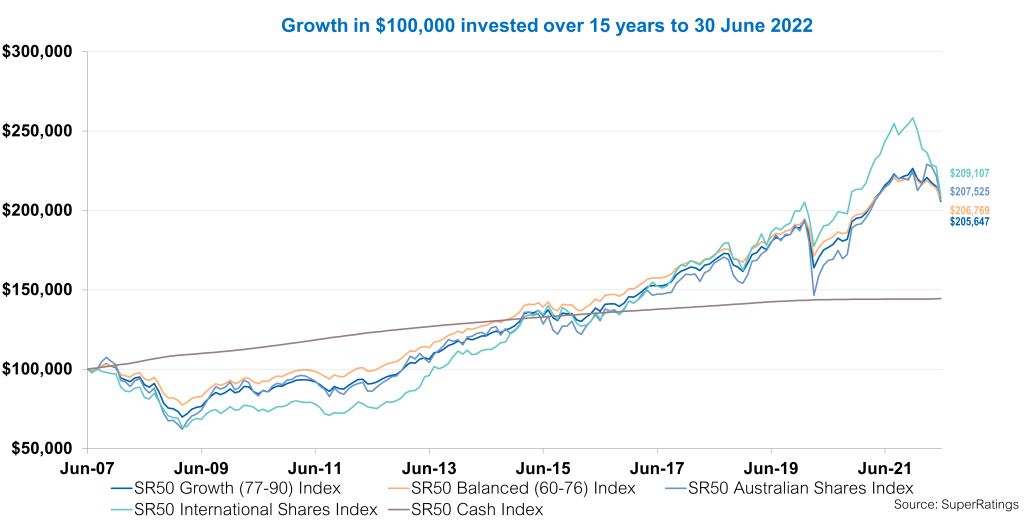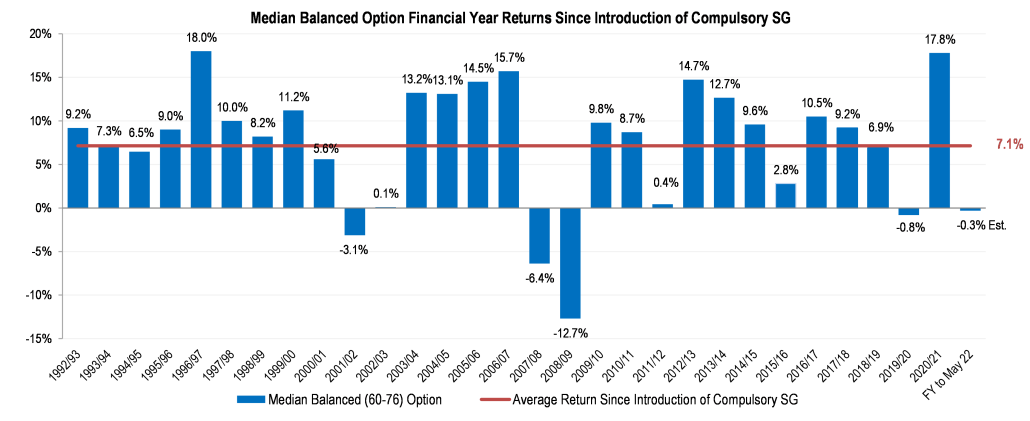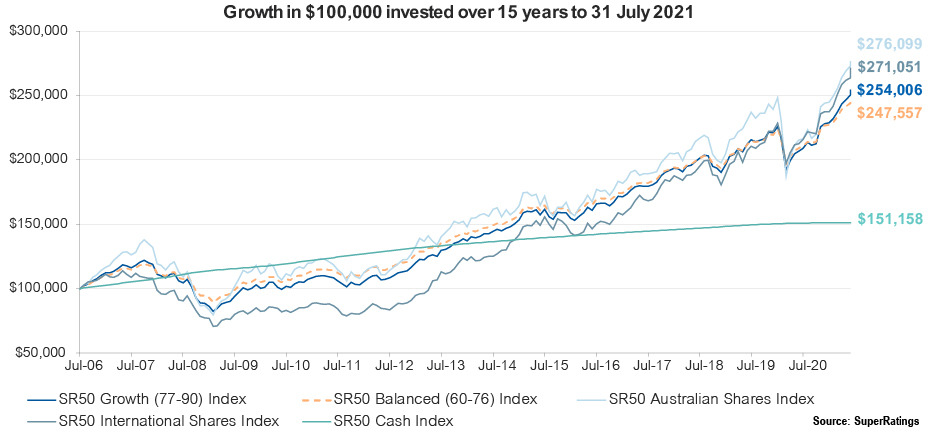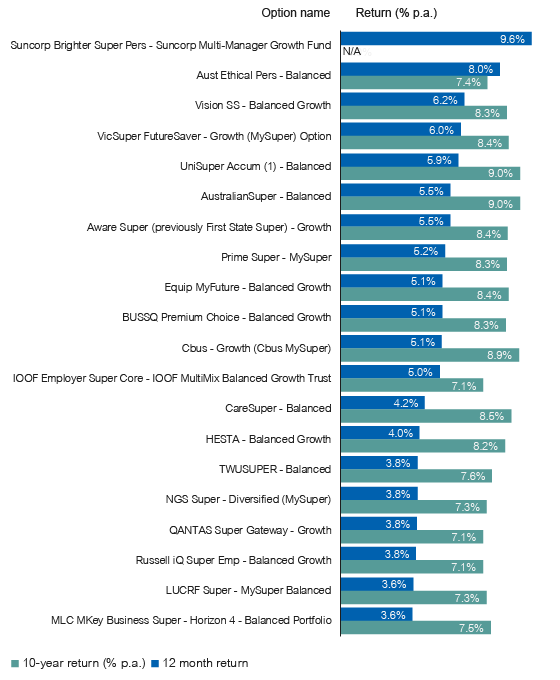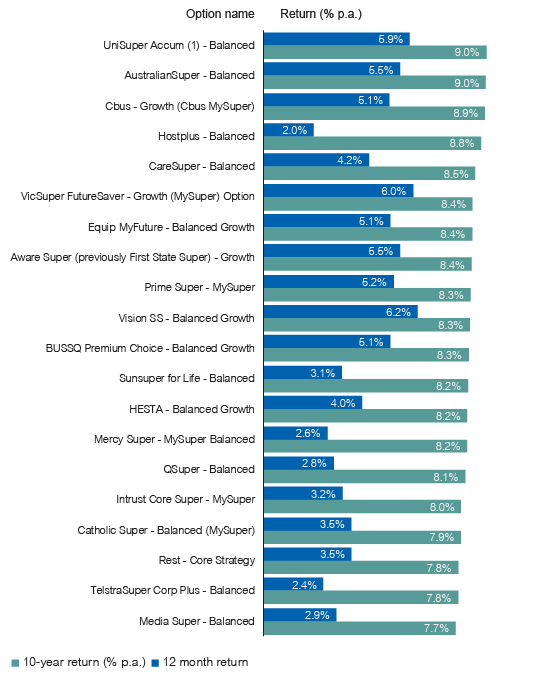Leading superannuation research house SuperRatings estimates that the median balanced option generated a return of 3.0% in October, providing a boost to members’ balances.
In November, we again saw a 25-basis point rise in Australia’s cash rate, with markets focused on whether this is a signal that future rate rises are moderating, or the Reserve Bank of Australia is simply waiting for the lagged impact of previous hikes to take greater effect before reassessing the size of future increases. Similar sentiment in the US supported a rally in equity returns over the month, with most markets globally posting positive results, despite inflation remaining elevated. It is pleasing to see some positive news for members this month; however, it reflects the volatile environment, with the bumpy ride expected to continue.
The median growth option increased by an estimated 3.7% in October, while the median capital stable option which has less exposure to share markets delivered a smaller positive result, with a rise of 1.3%.
Accumulation returns to October 2022
| Monthly | 1 yr | 3 yrs (p.a.) |
5 yrs (p.a.) |
7 yrs (p.a.) |
10 yrs (p.a.) |
|
| SR50 Balanced (60-76) Index | 3.0% | -3.4% | 4.5% | 5.6% | 6.3% | 7.8% |
| SR50 Capital Stable (20-40) Index | 1.3% | -2.5% | 1.8% | 3.0% | 3.6% | 4.6% |
| SR50 Growth (77-90) Index | 3.7% | -4.5% | 5.3% | 6.5% | 7.2% | 9.0% |
Source: SuperRatings estimates
Pension returns also rose in October, with the median balanced pension option up an estimated 3.3%. While an increase of 4.1% was estimated for the median growth option and 1.5% for the median capital stable pension option.
Pension returns to October 2022
| Monthly | 1 yr | 3 yrs (p.a.) |
5 yrs (p.a.) |
7 yrs (p.a.) |
10 yrs (p.a.) |
|
| SRP50 Balanced (60-76) Index | 3.3% | -4.2% | 4.6% | 6.1% | 6.8% | 8.5% |
| SRP50 Capital Stable (20-40) Index | 1.5% | -3.0% | 1.9% | 3.3% | 3.8% | 4.9% |
| SRP50 Growth (77-90) Index | 4.1% | -5.1% | 5.7% | 7.2% | 8.0% | 9.8% |
Source: SuperRatings estimates
Executive Director of SuperRatings, Kirby Rappell commented, “It is pleasing to see a 3.0% return for members over the month of October; however, it really reinforces the importance of setting, and sticking to, a long-term strategy as members who may have panicked and switched when returns were down last month may have missed out on this recovery. It is going to continue to be a bumpy road and focusing on these short-term indicators isn’t telling you the whole story, so it’s best to consider your long-term objectives and the level of volatility you’re able to tolerate. This will best support setting a long-term strategy that can cope with the noise we are seeing in markets. As we approach the end of the calendar year, it is the perfect time to review your superannuation, talk to your fund or an adviser you trust and run a health check on your current settings to ensure your super is fit for the new year.”
Release ends
We welcome media enquiries regarding our research or information held in our database. We are also able to provide commentary and customised tables or charts for your use.
For more information contact:
Kirby Rappell
Executive Director
Tel: 1300 826 395
Mob: +61 408 250 725
Kirby.Rappell@superratings.com.au


